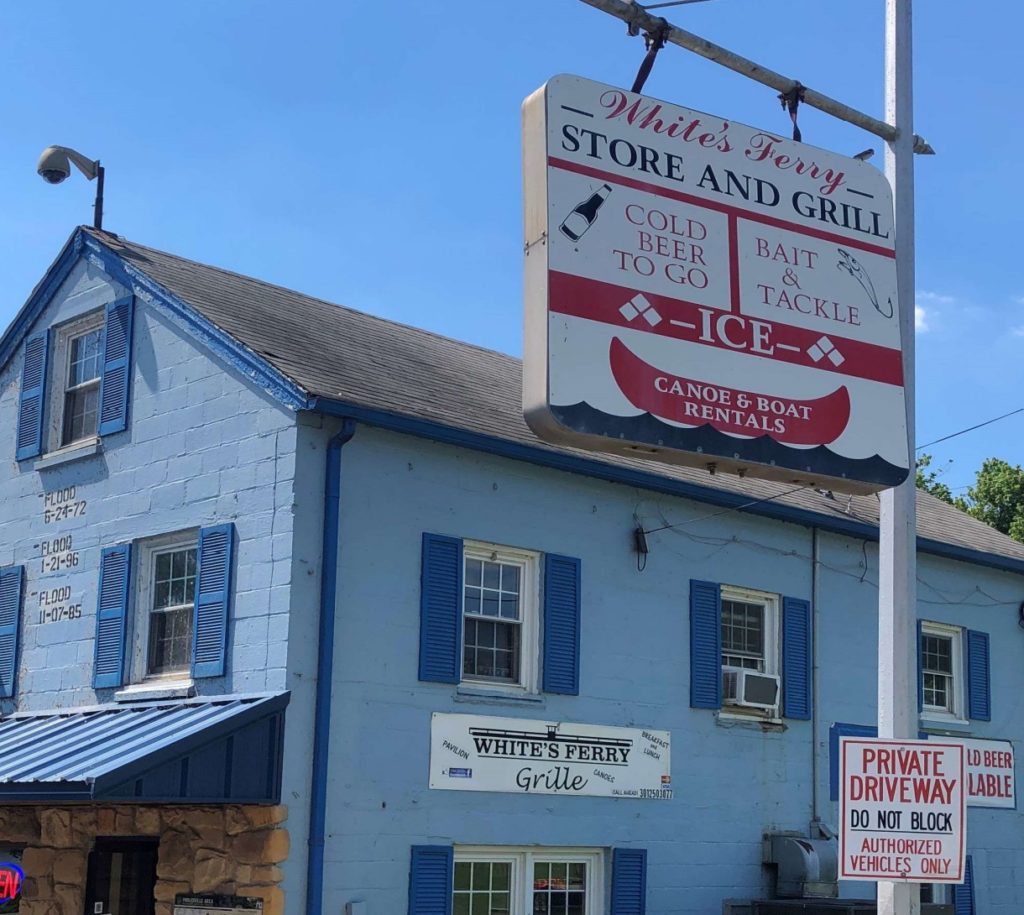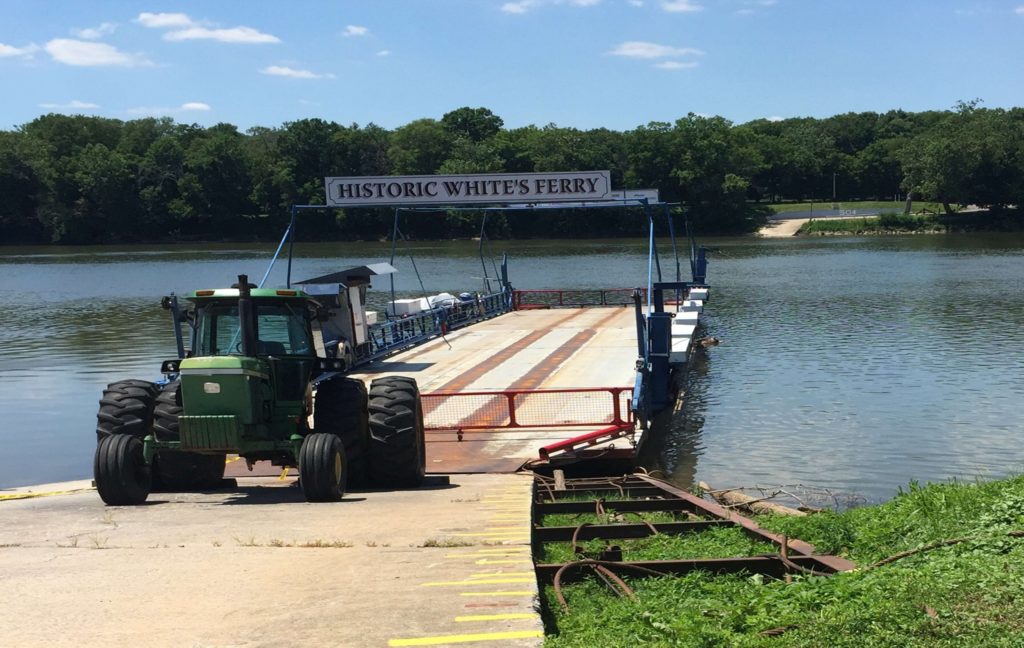Historic White’s Ferry was the last remaining ferry crossing of the Potomac River between Maryland and Virginia—operating, incredibly, since the 1790s. That is, it was operating until December 2020, when a long-running dispute over land ownership and ferry traffic crossing private property came to a head.
The ferry traveled between Loudoun County, Va. and Montgomery County, Md. and was the last of 100 ferries that used to exist on the Potomac River. In recent times, it was used by tourists on weekends and as a time-saving commuter route for locals.
White’s Ferry’s owners ceased operations immediately in late December 2020, in response to a Loudoun County Circuit Court ruling that found that “no public landing exists on the Virginia shoreline at White’s Ferry Road and the ferry is prohibited from landing at that location in Virginia.”
The ruling came as a result of an 11-year legal battle with Rockland Farm, which owns the Virginia property where the ferry lands.
As Bay Bulletin reported last year, Rockland Farm says White’s Ferry “breached a 1952 license agreement” by altering the landing approach without permission. They took the ferry to court, arguing that “they have been running an incredibly profitable business for more than 70 years without paying any rent or usage fees.”
Rockland Farm says the ferry’s owners refused to give the farm “fair compensation” for land use or liability protection, offering the ferry an opportunity to negotiate. “Rather than responding, they chose to cut off their customers and this lifeline between Maryland and Virginia that so many rely upon,” the farm’s statement says.
The Brown family, which owned White’s Ferry since the end of World War II, gave up the business at the end of last year and a new owner was found—Loudoun County businessman Chuck Kuhn, according to local reports. When Kuhn was unable to successfully negotiate with Rockland Farm to restore ferry service, he suggested that eminent domain may come into play to regain the Virginia landing.
At the same time, Montgomery and Loudoun counties jointly ordered a study of possible options for the future of White’s Ferry. The just-relased study looks at two options to continue the ferry: simply restoring service, or enhancing the ferry and its facilities to meet increasing demand.

The study finds more people have used the ferry in recent years and predicts the usage will grow substantially more—an increase of about 40 percent by 2040. Ferry rides have become more popular with visitors in the summer as a novel experience, with daily usage peaking in July at 1,625 vehicles transported per day (based on 2019 data).
It also supports regional businesses and is a practical everyday link for residents to reduce their miles traveled, the study finds. Factoring in travel cost savings, safety savings, emissions avoided, and trips not taken, the total economic impact of restoring current ferry service (with bare-minimum repairs and improvements) would be more than $13 million by 2040. The economic impact of an enhanced, larger ferry with a toll booth and roadway improvements at each landing would be nearly $25 million by 2040.
The current White’s Ferry business includes the ferry itself, a two-section vessel accommodating up to 24 passenger vehicles per trip, which operated on demand and a smaller yaw vessel that propels the ferry; a store/office, employee housing, restroom, and storage buildings, and concrete ramps and access roads on each landing side.
When vehicles are loaded, the ferry vessel crosses the river along a fixed steel cable guideway and proceeds to the opposite shore’s ramp. The loading, travel, and unloading process usually takes 10-15 minutes altogether. To restart ferry service as soon as possible, the guide cable would need to be replaced, ferry staff hired, and safety inspections completed.
If the ferry were to remain privately owned, it would come at no cost to the public for at least the next five years. The study also looked at a publicly-owned option that would come with a funding gap for the next several years, but a surplus once the ferry reaches the year 2040 as result of expanded capacity. Therefore, the study’s authors conclude, it would take significant public investment to ever generate the positive operating returns.
It’s now up to county officials to evaluate the study’s findings as White’s Ferry remains at the dock.
–Meg Walburn Viviano




